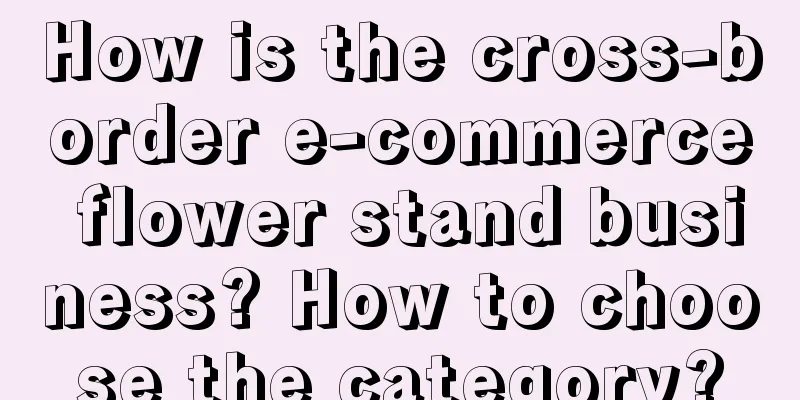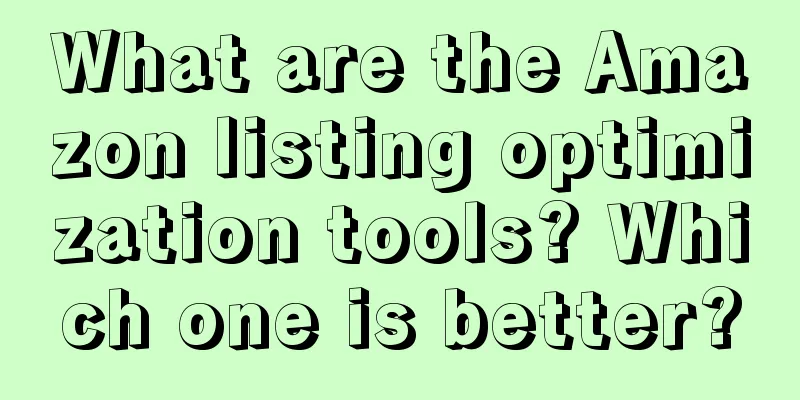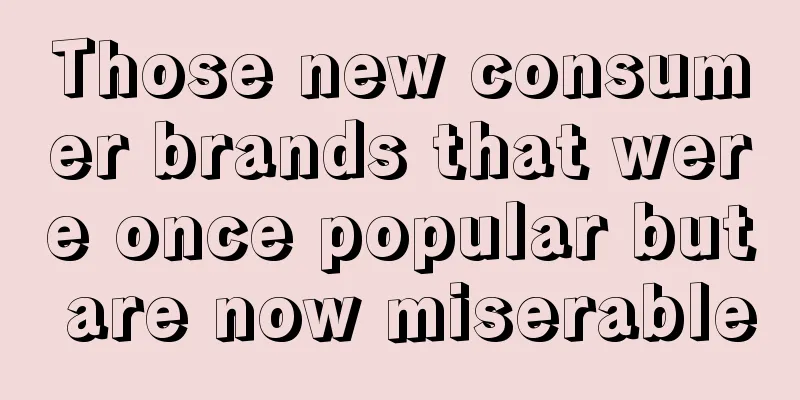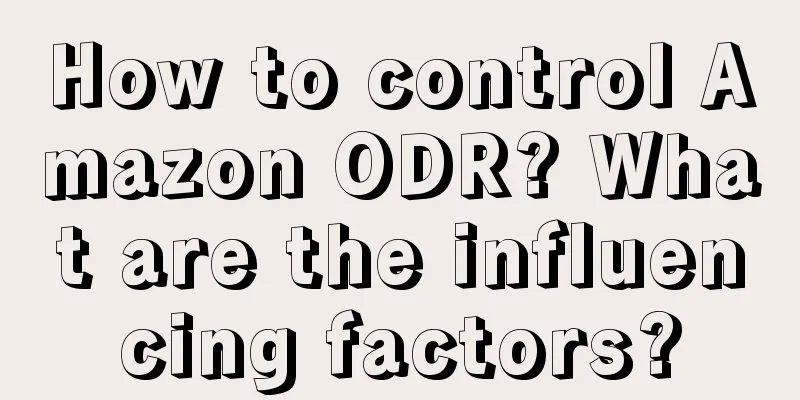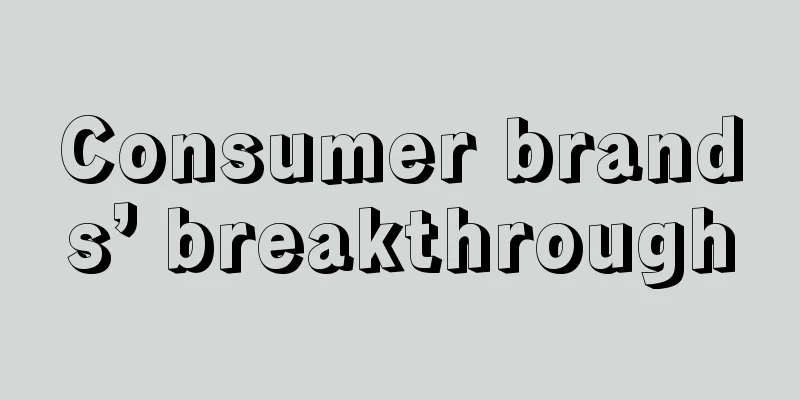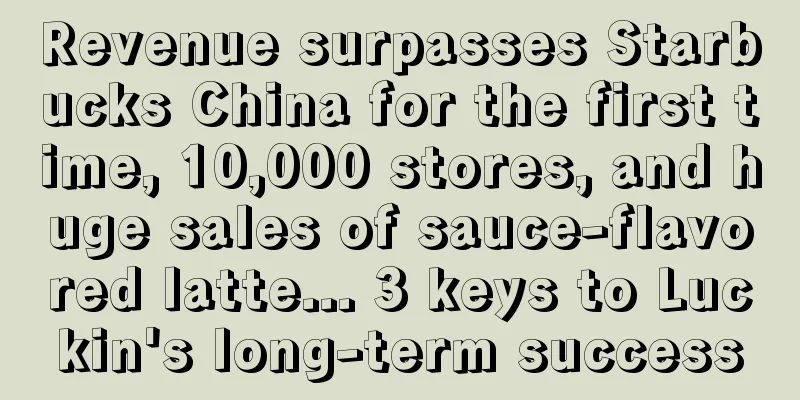In the “ear economy”, how to tell a good brand story in podcasts? | Osmo Awards 2024
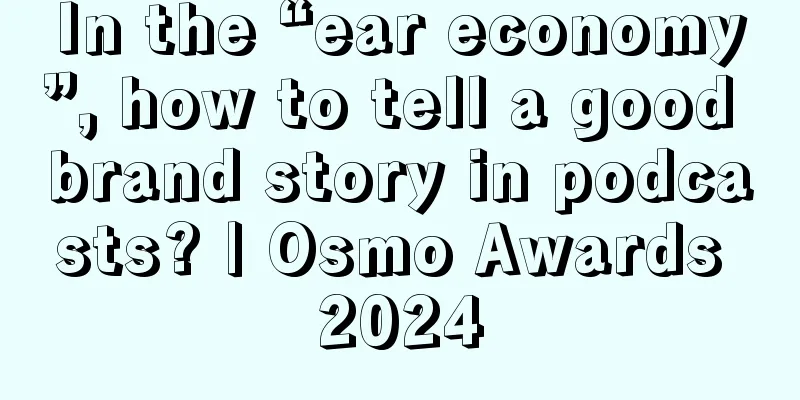
On December 2, CCTV-2 (CCTV) interviewed Himalaya and launched a special report titled "The New Sound Machine of Podcasts" in the "Economic Information Network" column: The report revolves around the "ear economy" and uses podcasts as an emerging content creation method. Through interviews with Himalaya and anchors, and using Himalaya data reports, it positively affirms and discusses topics such as "podcasts are moving from niche to mainstream" and "the commercial potential of podcasts is being released". After the report was released, it ranked fourth on the Weibo hot search list on December 3 with the topic #耳经济火了#. As CCTV reported, with the diversified development of Internet media, nowadays, as more and more people pay attention to the "charm of voice", according to the "2023 Himalaya Chinese Podcast Ecosystem Report", the number of Chinese podcast listeners exceeded 220 million in the same year, which means that among the 1.079 billion Internet users in my country, at least 2 out of every 10 are listening to podcasts. Why do more and more people like to listen to podcasts? Because it is not only a form of media, but also a fashionable lifestyle. On an Internet that is surrounded by short videos, the popularity of podcasts represents young people's pursuit of content depth and quality. They are no longer passive containers for receiving information, but explorers who actively seek valuable and inspiring content. "Listening to a podcast is like having an in-depth conversation with an old friend. This sense of connection is hard to get in other media." A senior listener said that he has been listening to podcasts for three years. Listening to podcasts is like finding a quiet interface in the noisy world. According to Morketing's observation, among podcast listeners, there are quite a few such in-depth listeners who have been listening for years. Especially now that podcasts are moving from a niche to the public, their special "stickiness" is also attracting more and more users. Interestingly, one anchor said that podcasts, with their "stickiness", strongly divide people into "people who don't listen to podcasts" and "heavy podcast users", and there are almost no people who just listen occasionally. In other words, when you become interested in podcasts, podcasts will not "pass you by". Why does this phenomenon occur? On the one hand, most podcast listeners have integrated the existence of podcasts into their daily lives and made it a part of their daily lives; on the other hand, many listeners have a fan mentality towards podcast hosts or guests, which further deepens the listeners' stickiness to a particular podcast program and host. According to the 2024 Podcast Industry Report released by Himalaya, Ipsos, and Ritan Park, more than three-quarters of the listeners are regular listeners for more than one year, and more than one-third are long-term listeners for more than three years. Moreover, more than 80% of the listeners listen three days or more a week, and 76.2% of the listeners listen for half an hour or more every day, which is equivalent to the time users spend watching at least 60 short videos and browsing 10 public account articles - this shows that podcasts are rapidly occupying users' media usage time and becoming an indispensable part of their lives. The report also shows that 45.9% of listeners have subscribed to paid programs, and 44% of them will recommend them to their relatives and friends after purchasing. In other words, when a listener starts to subscribe to a paid program, there is a 50% chance that he or she will recommend it to his or her relatives and friends, and promote the podcast as a "tap water" product. If the listener happens to be listening to a brand podcast, then after subscribing, the user can listen to it repeatedly, which can also allow the effect of brand placement to continue for a long time and deeply occupy the minds of consumers. If "strong stickiness" is a major characteristic of podcast listeners, then the rich range of people covered is the significant advantage of podcasts as a new medium. Among them, the characteristics of one group are very typical, namely high-income earners and corporate managers with a monthly salary of more than 20,000 yuan. According to a report released by Himalaya, Ipsos, and Ritan Park, this group of people are more dependent on podcasts, listening more days a week and longer than other groups. More than half of the podcast listeners are in first-tier cities or new first-tier cities, far exceeding the audience proportion in other first-tier cities. At the same time, 74.1% of the listeners have a college degree or even a postgraduate degree. These listeners, who have high education, high income and high consumption potential, are more open and diverse. They like to explore new knowledge and advocate a high-quality lifestyle. Their favorite program types tend to be business and finance, workplace, science and technology. The coverage of podcasts for this group of listeners also provides brands with a precise and high-value marketing platform, allowing brands to have a platform to establish connections with these high-net-worth listeners and tap into more incremental growth. Once upon a time, the explosion of "short videos" was like a storm, forcefully breaking into our lives, bringing a visual feast and instant pleasure. Today, podcasts, with their gentle and profound attitude, attract us to explore the world with our ears. In comparison, although podcasts are not a representative of strong traffic, their ecology is obviously more stable. In Morketing's view, if the characteristics of short videos are "short, flat and fast", then the characteristics of podcasts are trust, strong sense of companionship and sticky dependence. A big difference is that short videos emphasize visual impact through the eyes, output "content fast food", meet the needs of instant entertainment, have high spread, but it is almost difficult to leave a memorable point. At a time when short videos are spreading virally, podcasts are more like a clear stream, the output content is more profound, and through the input of the ears, the sound can create a sense of companionship, communication and presence during the communication process, which can more effectively touch the hearts of the audience. The value of podcast marketing also emphasizes the long-tail effect. If a brand wants to establish a long-term brand building, podcasts are actually more suitable. For example, as mentioned above, a brand podcast may be a "slow operation", but it is also a "deep operation", allowing all the "sticky" listeners to not only become fans of the program, but also cultivate fans of the brand. This is a deeper "planting of grass". In addition, due to the overall "deep content" characteristics of podcasts, listeners are more receptive to brand content interspersed in them. For example, in a 90s broadcast by Pantene, in order to "plant grass" for a new collagen hair mask product, the podcast program popularized the principles of hair damage repair, allowing listeners not only to learn how to distinguish between traditional hair masks and conditioners, but also to naturally "plant grass" for brand content in the hearts of users. This soft implantation of brand content will not make the audience feel disgusted. Of course, although hard advertising is more direct, the audience who are doing other things at hand will generally not fast forward for a few seconds of advertising. According to the "2024 Podcast Industry Report" released by Himalaya, Ipsos, and Ritan Park, listeners' attitudes towards advertising vary from platform to platform, with the highest acceptance rate reaching 63.6% and the lowest withdrawal rate reaching 1.9%. Among them, listeners of parenting and family, fashion, and beauty podcasts are less willing to listen to advertising content, while listeners of knowledge podcasts such as workplace, self-growth and healing, business and finance, social culture, and history are more tolerant of advertising. In other words, as long as the content and program are chosen correctly, the content of brand marketing can become a memory point in the mind together with the knowledge remembered by the audience. As long as the audience thinks of this part of knowledge, they will also think of the brand or product. Of course, a large number of listeners have stronger execution ability and will directly open the shopping platform to search for products after being "planted with grass". The report further pointed out that 48.4% of listeners will further search for products after being "planted with grass" by podcasts, 44.6% of listeners will think of the corresponding podcast content when they see the corresponding products, 31.5% of listeners will share with friends and relatives who may be interested in the products or activities, and 17.4% of people will go to offline scenes to experience or try them out. Podcasts use "deep content" to bring about the effect of "deep planting of grass". Whether it is the completion rate of more than 50% or the long-tail effect, they are great advantages. Compared with the fleeting exposure of "fast food content", podcasts use content to plant seeds in the user's mind, which will undoubtedly leave more traces. In the past two years as podcasts have continued to rise, countless brands that want to delve deeper into content and are not just satisfied with "short, flat and fast" exposure have begun to enter the market. Well-known brands like Starbucks, Nike, Louis Vuitton, or well-known beauty brands such as L'Oreal and Shiseido have successively deployed podcast marketing, launching podcast columns or customized theme podcasts, and began to explore how to communicate with users through sound. Ritan Park, a leading podcast organization, conducted a survey on more than 200 podcast programs launched by brands this year. From the perspective of the overall industry fields, in addition to the most common beauty and personal care, food and beverage, Internet, finance, film and television literature and other fields, this year's business base is more comprehensive, further radiating to wider-dimensional content such as universities, supermarkets, and catering. The medical and health industry, which was still an emerging category last year, has increased its frequency of cooperation with podcast marketing this year, accounting for 16.4% of the survey content; and the major category of cooperation, beauty and personal care, is still strong this year, accounting for 26.3%. Among these brands, many that have long-term cooperation on a monthly basis have become leaders in their respective categories in the podcast field, especially in the medical beauty, finance and pharmaceutical health industries, where the results are particularly significant. After several years of development, the podcast marketing ecosystem has become increasingly mature and closer to the mainstream market. For example, Ximalaya has already used its platform integration capabilities to provide brands with full-link services from planning, customization, dissemination, and effects; Ritan Park directly provides one-stop services, from brand demand analysis to target group segmentation, from integrating podcast resources to using voice to spread the brand. When a brand considers multiple factors such as platform data, host style, and content personality, the information delivered through podcasts and the users reached will be more accurate, thereby achieving deep seeding and conversion. So, how do brands at different stages of development engage in podcast marketing? Let's talk about podcast platforms first. The top three platforms, Himalaya, Xiaoyuzhou, and NetEase Cloud Music, were originally focused on audiobooks, podcasts, and music, but now they have gained recognition from listeners in the podcast field. Some niche listening channels are also gradually entering the public eye, such as Sanlian Zhongdu, Kanlixiang APP, Google Podcasts, Maoer FM, PocketCasts, and Aotu Universe. Among them, Ximalaya has the widest age coverage and high net worth population coverage. When choosing a platform, brands can completely choose according to their own audience or desired potential population. In terms of marketing methods, there are also multiple options such as voice-over advertising/patches, single-episode customization and integrated marketing. From the perspective of the brand’s own development stage, different forms of marketing can also be chosen. For example, well-known large brands can directly conduct creative marketing events on podcasts to attract listeners with a fresh perspective; new brands in the climbing stage can seize the opportunity to explore a fixed delivery rhythm and gradually form a top mind in the category; if there are competing products entering the market, they can compete with differentiated content and scenarios to seek breakthroughs. At present, some pioneers have achieved remarkable results. For example, L'Oréal Paris Men uses the concept of "runway" and the core of #Moving Forward, Be Extraordinary# to encourage men to break through the discipline of the social clock and the only standard of secular success. Then, through four programs, from different perspectives such as life, philosophy, business, and career, it explains the diverse choices of men, uses content to open the hearts of users, and then provides users with different and suitable choices in the form of "Friend Supply Pack", "Career Supply Pack", "Spiritual Supply Pack" and "Wisdom Supply Pack". Or the perfume brand Juliet with a Gun, which targets the female audience, cooperates with seven podcasters to customize the program based on their own temperament and brand needs, using a variety of themes and different interpretations to attract women of different styles. In the end, the total number of views reached 2.43 million, which aroused the purchasing desire of many female listeners. Bose headphones, which cooperated with Himalaya, used the platform's integration capabilities to do creative marketing. With the theme of "Hearing the Life of Sound", three programs were invited to create a life scene laboratory to explore the various possibilities of home music space, which also helped Bose headphones achieve more than 70 million exposures. Of course, there are also many brands that directly cooperate with podcast programs to reach target listeners more directly and deliver brand information. In Morketing's view, the advantages of podcast marketing are particularly prominent in the context of the current saturation of traffic growth. Compared with the fierce competition for traffic on short video platforms, podcast marketing still has broad potential for exploration. At a time when many brands are eager to establish a "communication" and "parallel" relationship with consumers, podcasts provide a more intimate and deeper communication platform. For companies that want to build long-term brand value, it is also a good choice. Text | Tinney |
<<: Data analysis method of experts 4: benchmark analysis
>>: Game anchor travels around the world, gaining millions of followers with just one video
Recommend
We-media IP entrepreneurship | 100 money-making knowledge series I bought in 6 months
On the road to entrepreneurship, every collision o...
Automotive video marketing 3.0: Creating content is also about building relationships
With the intensified competition in the automotive...
The Making of a “Roll King” in the New Tea Beverage Industry
This article mainly describes the competitive situ...
Is it easy to do business on Amazon Japan? What changes have taken place?
If you want to open a store on Amazon's cross-...
Three questions for brand marketing planners
This article begins with a question: others have a...
From scale profit to service profit, the logic of hotel business has really changed
The hotel industry is shifting from "waiting ...
Is there any risk in changing the brand on Amazon? How to register the Amazon brand?
When opening a store on Amazon, you may need to ch...
Video account is about to usher in a major upgrade
This article starts with the major update of Video...
Let’s talk about the consumer journey
What is the consumer journey? This article introdu...
"Little Brother Yang" has a big fall, revealing the three sins of live streaming sales
Xiao Yangge's case was eventually punished, bu...
What causes low Amazon product ratings? How to avoid them?
On the Amazon platform, there are many products wh...
You can’t make money by shooting Douyin videos because you are doing it wrong!
Everyone knows the monetization ability of Douyin ...
Does it cost money to open a Lazada account? Do I need to register a company to open a store?
When choosing a cross-border e-commerce platform, ...
High-end store brands seek change
In this article, the author takes high-end brands ...
eBay launches new return options and social pages
eBay Australia announced that it has improved the ...
